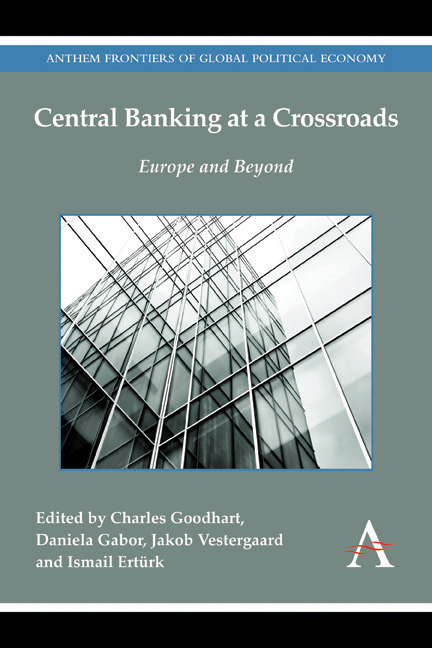Book contents
- Frontmatter
- CONTENTS
- Preface
- 1 Introduction
- Part 1 Bank Capital Regulation
- 2 Constraining Discretion in Bank Regulation
- 3 Fallacies and Irrelevant Facts in the Discussion on Capital Regulation
- 4 Complexity, Interconnectedness: Business Models and the Basel System
- 5 At the Brink of Insolvency: Shallow Recapitalization Exercise Fails to Bolster Europe's Ailing Banks
- Part 2 Bank Resolution
- Part 3 Central Banking with Collateral-Based Finance
- Part 4 Where Next for Central Banking?
- List of Contributors
- Index
2 - Constraining Discretion in Bank Regulation
from Part 1 - Bank Capital Regulation
Published online by Cambridge University Press: 05 December 2015
- Frontmatter
- CONTENTS
- Preface
- 1 Introduction
- Part 1 Bank Capital Regulation
- 2 Constraining Discretion in Bank Regulation
- 3 Fallacies and Irrelevant Facts in the Discussion on Capital Regulation
- 4 Complexity, Interconnectedness: Business Models and the Basel System
- 5 At the Brink of Insolvency: Shallow Recapitalization Exercise Fails to Bolster Europe's Ailing Banks
- Part 2 Bank Resolution
- Part 3 Central Banking with Collateral-Based Finance
- Part 4 Where Next for Central Banking?
- List of Contributors
- Index
Summary
Introduction
Marking your own exams is a perilous pursuit. Stephen Levitt of Freakonomics fame looked at abnormalities in test scores in Chicago public schools when these tests were marked by the schools' own teachers (Jacob and Levitt 2003). He found systematic evidence of upgrading of scores in elementary schools by teachers marking, in effect, their own exams.
More recently, the LIBOR scandal has exposed many of the same self-regulatory problems. The incentives to shade their self-assessed LIBOR exam grades have proved to be too much, for too many, for too long. As we now know, systematic misreporting resulted. The self-regulatory model was again found wanting.
Yet there is one area of finance where self-regulation continues to stage a last stand—bank capital standards. Since the mid-1990s, banking regulators globally have allowed banks the discretion to use their own models to calculate capital needs. Most large banks today use these models to scale their regulatory capital. In doing so, they are, in essence, marking their own exams.
This self-regulatory shift was made with the best of intentions. Yet its consequences have been predictable. Self-assessment has created incentives to shade reported capital ratios. As elsewhere, a regulatory regime of constrained discretion has given way to one with too much unconstrained indiscretion.
This calls for regulatory repair. Without change, the current regulatory system risks suffering, like the Chicago teachers and the LIBOR fixers, from reputational damage. Fortunately, there are early signs that regulatory change is afoot to place tighter constraints on this (in)discretion.
The Emergence of Self-Regulation
To understand how we ended up here, it is useful to explore the historical contours of the regulatory debate. This is a history in roughly four chapters.
Chapter 1 covers the period prior to the agreement of the first Basel Accord in 1988. Until then, a patchwork of national regulatory frameworks for capital adequacy operated. Some countries set capital adequacy standards based on simple measures of bank equity to assets—a leverage ratio. Others, including in the USA, used risk-based standards with risk weights set by regulators for a small set of asset categories.
- Type
- Chapter
- Information
- Central Banking at a CrossroadsEurope and Beyond, pp. 15 - 32Publisher: Anthem PressPrint publication year: 2014



